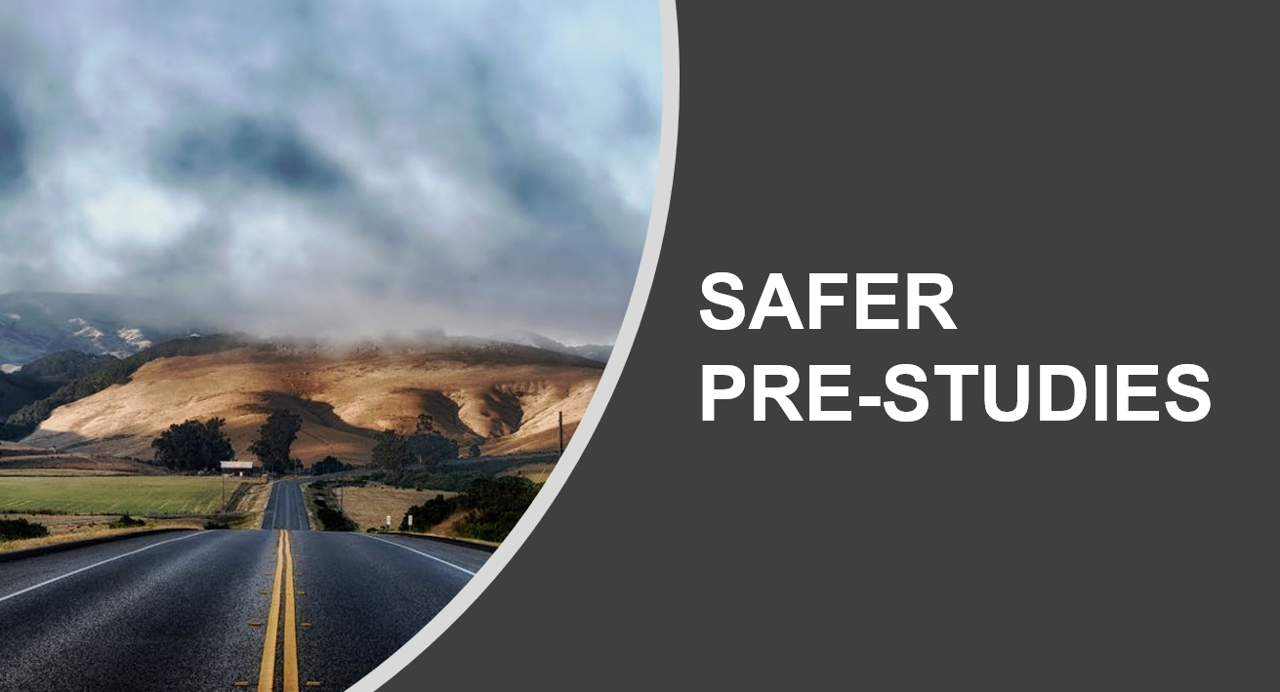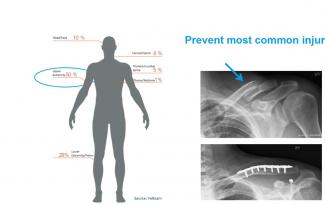Three new pre-studies approved to be conducted at SAFER’s research platform
Three additional SAFER projects have now been granted funding to continue building knowledge to contribute to the creation of a safe and sustainable transport system, for all:
• SAFER cycling
• Safety Culture for automation
• The role of road design for vulnerable road users at intersections
“We received as many as 9 applications in this call”, says Malin Levin, Deputy director at SAFER.
“Overall, the quality of the applications was very high and the SAFER Board did not have an easy job to choose which projects to grant”.
The purpose of SAFER's pre-studies is to stimulate collaboration and activities that can lead to, for example, larger projects and exploration of new areas to meet SAFER’s overall vision.
Safety culture in human – automation interaction
In this study, our researchers from VTI, Volvo and TØI will investigate the safety culture of companies that handle automated vehicles. Existing studies indicate a close relationship between safety culture and safety outcomes. However, the role of safety culture in transport companies with automated vehicles is yet to be examined. It is therefore important to bridge the gap between technology and human behavior at organizational levels, link to the zero vision with practical applications.
The study will examine the role of safety culture in companies with automated vehicles, by answering the following research questions:
1) What are the specific safety challenges in companies using automated vehicles?
2) (How) are these safety challenges different from those in other transport companies?
3) How can safety culture contribute to solving the safety challenges in companies with automated vehicles?
4) What is the new role of safety culture in companies with automated vehicles?
SAFER cycling: from crash avoidance to injury reduction - increased visibility and reduction of injuries by smart clothes and materials
In traffic safety, the safety for bicyclist is one of the largest challenges. Bicyclists are nowadays the largest road user group with the highest number of severe injuries. There are two main challenges:
• Detect cyclists: The most common accident scenario on rural roads is that the bicyclist is struck while cycling along the road. Even if most of the accidents occur in daylight conditions drivers claims that they did not see the cyclist.
• Prevent the most common injury type: Head injuries account for the most severe injuries but these could partly be prevented with helmets. However, the most frequent injured body region, upper extremities, are still unprotected. A shoulder protection could reduce the number of injuries.
This pre-study will push the development towards a reduction of injuries and at the same time aid a more sustainable mode of transport by making cycling safer. One target is to better understand how the ability of drivers to detect cyclists in daylight conditions can increase by using smart materials and technology. Furthermore, knowledge about how shoulder protection could be developed will also be created.
The research questions that will be investigated in this study are:
• How can we increase the ability of driver to detect cyclist in daylight conditions and thereby reduce the seriousness of injuries in case of a crash?
• What are the requirements on a shoulder protection system against injuries to make it both protective and accepted?
Folksam, VTI, Chalmers, University of Borås will collaborate in this study.
Supporting safe behavior in complex intersections
The third project approved is “The role of road design to support psychological processing and safe behavior of vulnerable road users at complex intersections: A feasibility study in traffic simulators”. This project will be conducted by our researchers from VTI and Gothenburg University.
Despite being under-represented in the official reports, the number of ill interactions between vulnerable road users (VRUs) is growing with consequences for both road safety and the engagement in sustainable travel modes. A great extent of safety-critical situations involving VRUs are due to their engagement in aberrant behaviors, e.g., misjudgment and errors. These situations possibly occur due to the low number of formal rules regulating VRUs’ road behavior and the less attention payed by urban planners to design dedicated off-road facilities for vulnerable users. Segregated spaces to keep VRUs away from the car lane have been implemented to improve the safety of bicyclists. However, it has often resulted in poor-designed common spaces, where road users with different behavioral patterns and needs are kept together, creating a new set of safety concerns. The recent increase in popularity of e-scooter-mobility services is making this problem even more evident and highlights the urgency to find new solutions for safe traffic environments. This project aims to identify effective design countermeasures to support the vulnerable road users’ perceptual and cognitive tasks and also to give them support to make better behavioral choices in critical complex traffic situations, i.e., segregated shared space on intersections.
This project would constitute the stepping-stone for next studies in the area of road safety behavior; thus, we expect to provide promising results enabling to introduce a new methodology to investigate the VRUs-environment interaction via a genuine multi-disciplinary work. The project team also expect to demonstrate the advantages of conducting simulator studies using a systematic manipulation of the environmental conditions and collecting multi-methodological human responses to safety countermeasures. The findings would hopefully also generate a larger successful project application.
SAFER’s pre-studies – the overall idea
Pre-studies on emerging or entirely new topics and strategic areas are needed to develop SAFER according to partner needs. The novelty, and at times uncertainty, of this exploration may be considered too “high risk” or too creative to fit into established funding programs. Still the investment in such strategic knowledge creation can be leveraged e.g. by using the unique, new competence as an entry ticket to prestigious international contracts. We also welcome proposals that are of a different nature, for instance for finalization of publications from a completed project. Simply put, projects that lead SAFER forward and contribute to the continued development of our joint collaboration platform. The pre-studies should proactively stimulate project generation to maximize the benefits of our multi-disciplinary platform and obtain a broad commitment, both between partners and within research areas. The target to carry out 6-8 studies per year in 3-6 calls.
Next call opens in June
The preliminary time schedule for the next call is:
- June 1: Call opens
- August 30: Call closes
- Mid sep: Evaluation
- September 17: SAFER Board meeting - for decision
- End September: The decisions will be communicated and the projects can start thereafter


